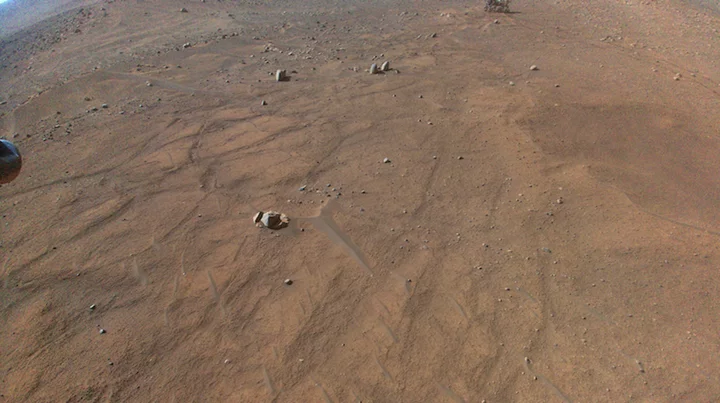NASA expected its Mars helicopter, Ingenuity, to last for five flights. It's now flown a whopping 54 times.
The space agency released footage from the small experimental robot's early August journey through the Red Planet's Jezero Crater, a region that once teemed with water. While 16 feet in the air, the chopper saw its exploration partner, the car-sized Perseverance Rover, which had recently captured an image of Ingenuity.
"Look who it is! I recently drove right past Ingenuity and got a pic after it ended its 53rd flight early," NASA posted from its Perseverance Twitter account. "Happy to say it’s since completed a 54th flight to check out its systems. (Even caught a glimpse of me too!)"
SEE ALSO: NASA's rover photo shows water once absolutely gushed on MarsOn Ingenity's previous (53rd flight), the helicopter flew for an impressive 466 feet before automatically landing. Ingenuity has a software program, aptly named "LAND_NOW," that will tell the craft to land if it senses a number of abnormal conditions. In this case, NASA engineers suspect the helicopter's flight images didn't accurately sync up with information about Ingenuity's speed and motion.
"While we hoped to never trigger a LAND_NOW, this flight is a valuable case study that will benefit future aircraft operating on other worlds," Teddy Tzanetos, who works on the Inguenity mission, said in a statement.
In the top of this image taken by the Ingenuity helocopter, you can see the six-wheeled Perservance rover. On left is the end of a helicopter leg. Credit: NASA / JPL-Caltech The Ingenuity helicopter on the Mars desert floor following its shortened 53rd flight. Credit: JPL / Caltech-ASU / MSSSWant more science and tech news delivered straight to your inbox? Sign up for Mashable's Light Speed newsletter today.
The Perseverance rover, with some bonus help from Ingenuity — the first craft to make a powered, controlled flight on another planet — is on a mission largely devoted to finding signs of past primitive life on the Martian surface. This could mean telltale pieces of genetic material, or parts of a degraded cell.
So far, there's no proof life ever existed on Mars — or anywhere beyond Earth for that matter. One day, however, scientists may have the opportunity to look deep below the Martian ground, a place that could have hosted life for much longer than the profoundly dry, cold, and irradiated surface.









